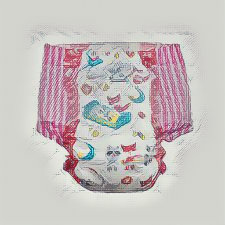Peter’s childhood was relatively normal; he played army with his friends, climbed trees, had a train set and loads of action figures, and liked nothing more than his trusty old jeans with a hole in the knee, a zip-up hoodie, and his thoroughly worn in trainers.
His mother, Helen is an architect and his father worked part-time in a biscuit factory. Helen often told her husband that he could give up work as her wage alone could easily support their family, but he was proud to work and wished he could get more hours and maybe even a promotion. But with more women in the boardroom, more women get promoted and as such, Peter’s dad had been stuck on the shop floor for years whilst his mother’s career went from strength to strength. When Peter was younger his father became permanently stuck to the shop floor when a section of racking collapsed, tragically killing him on the spot. Ever since that day, Peter has been raised solely by his mother.
With the support of his family and teachers, Peter faired relatively well with the loss of his father. The nearest thing Peter had to a father figure in his junior years was Ron Blakely; a widower in his fifties. Mum called him the handyman but mostly he Hoovers and irons, dust and washes up. He used to be a proper handyman but as the work dried up for him, he diversified into a more domestic realm as that was one area which the women weren’t taking over. Even then, Ron found it hard to earn enough to support himself as more and more men were being laid off, leaving them plenty of time to tend to such chores. “In my day they used to call ’em kept men … if a bloke didn’t have a job he was a sponger, too lazy to work … these days they call ’em stay-at-home-husbands and it’s supposed to be a good thing… times change lad… times change,” Ron said to Peter.
Ron had to give up working altogether due to ill health and since then the ironing and laundry had been done by an agency; run by women, worked by men. Between the two of them, Peter and his mother kept on top of the hoovering and dusting.
Peter’s mother gave him the freedom to strive to be all he could be and encouraged him to try his best, “Even if you’re not very good at something, your best is good enough.” she used to tell him.
Like most boys, Peter had an average academic record and like most boys, Peter sat towards the back of the class. In order to provide a solid education for the brightest kids, classrooms are ordered with the highest marks towards the front and the lower marks towards the back. Peter didn’t feel bad about always ending up towards the back of the class as low marks weren’t really frowned upon if you were a boy. However if a girl ended up in the back half of the class, she’d be given a level of help and attention that the boys never received. Of course, there were some boys who were up there with the girls in the first three rows, but no more than a handful. Girls were simply better at schoolwork and as such, their prospects are of far greater importance. The shift from male to female dominance in the workplace meant there was little need to push the boys towards academic excellence.
Peter was in his final year of junior school when he first heard the phrase Genderquake. He didn’t know what it meant, but like an earthquake or starquake, it sounded exciting. He asked his mother what it meant and was unimpressed by the reply. “It simply refers to the fact that more women have jobs than men, that women get paid more than men, and that more men stay at home and do the housework than women. Not so long ago it was quite the opposite.”
“I thought it was going to be like an earthquake or something,” Peter said. He recalled being equally unimpressed when he found out what a ‘skyscraper’ really was. He’d heard the phrase previously and visualized a huge machine, towering above cities, trundling along on giant caterpillar tracks and literally ‘scraping’ the sky… so realizing it was just a tall tower block was a bit of a letdown… anyway…

